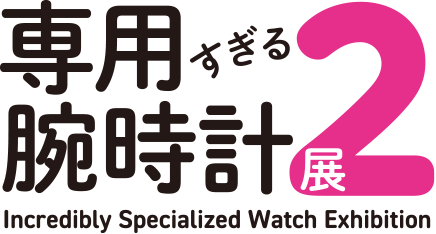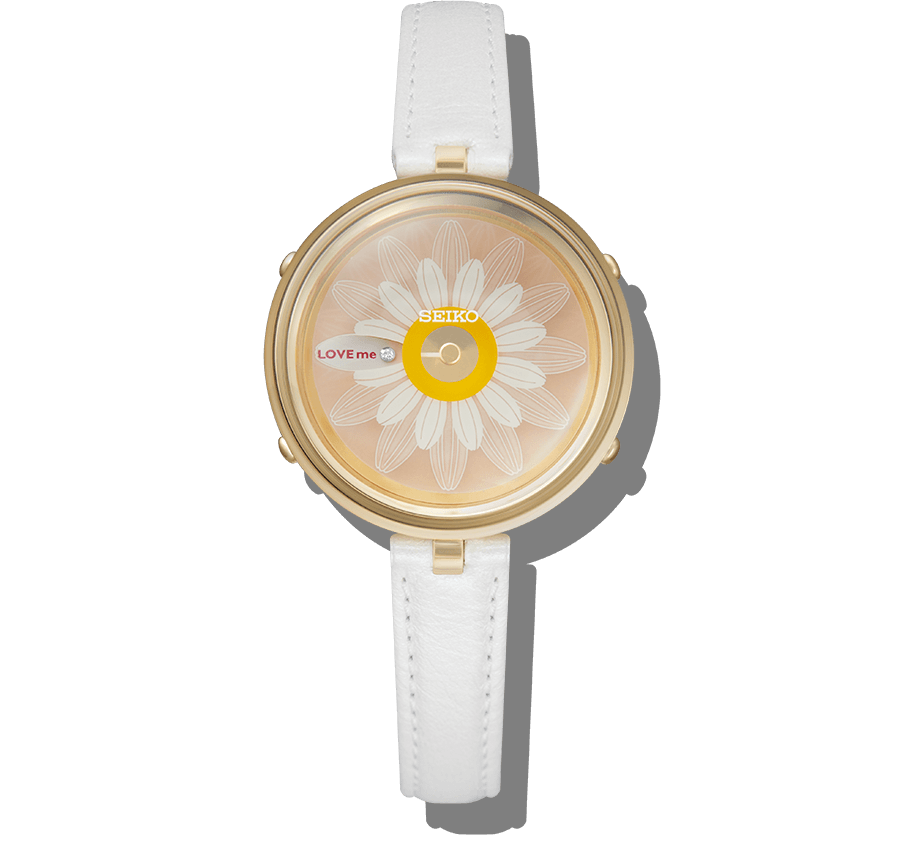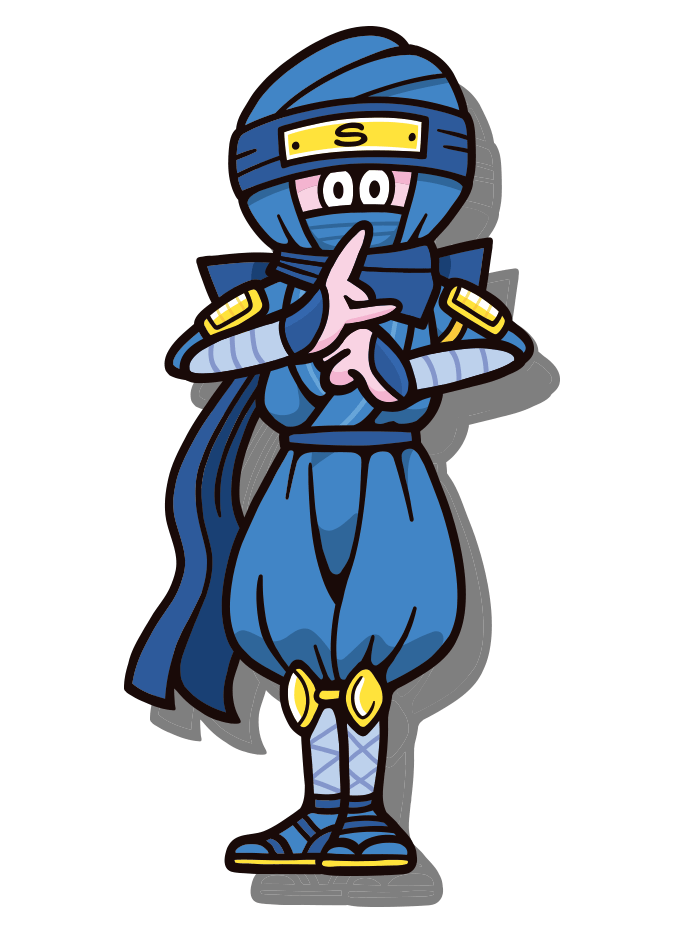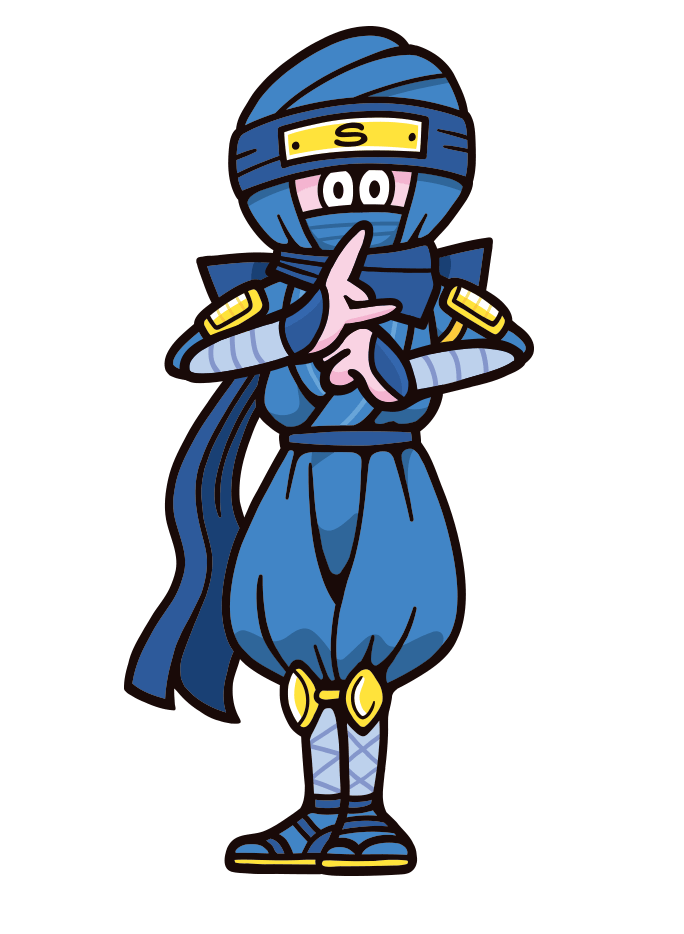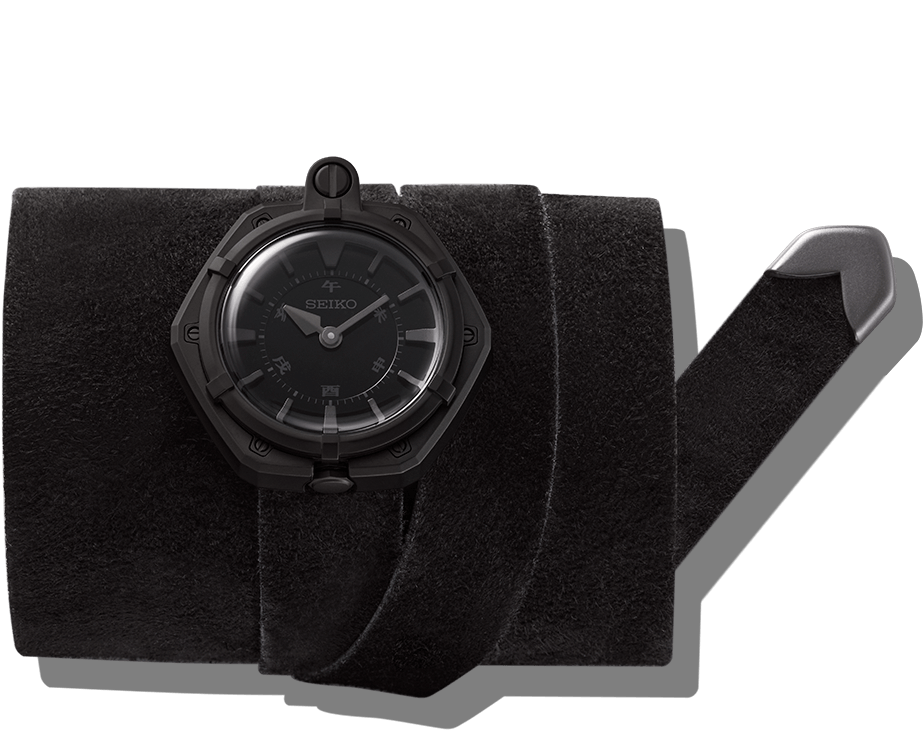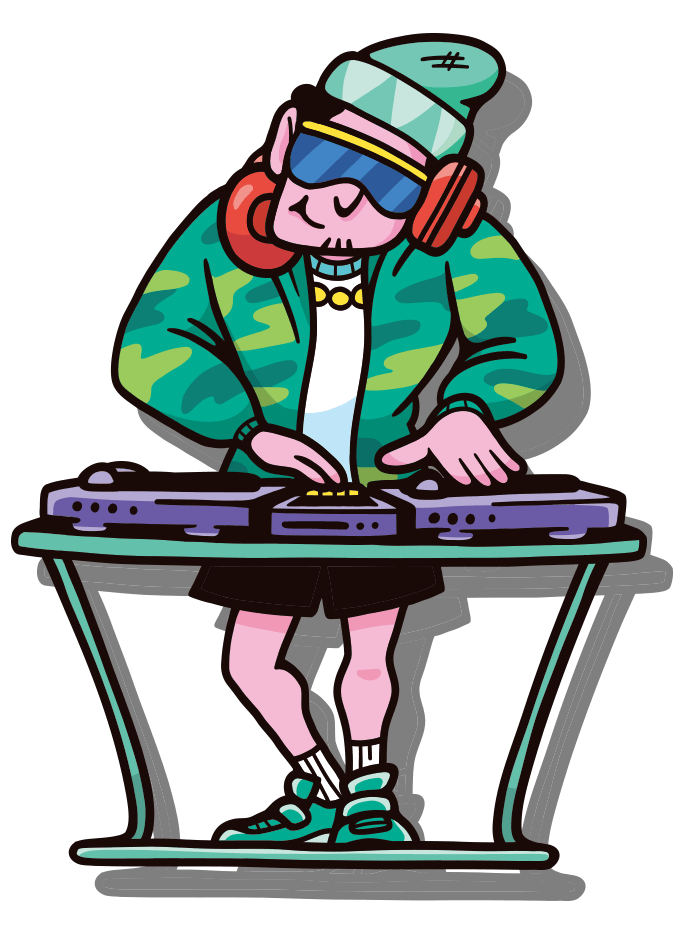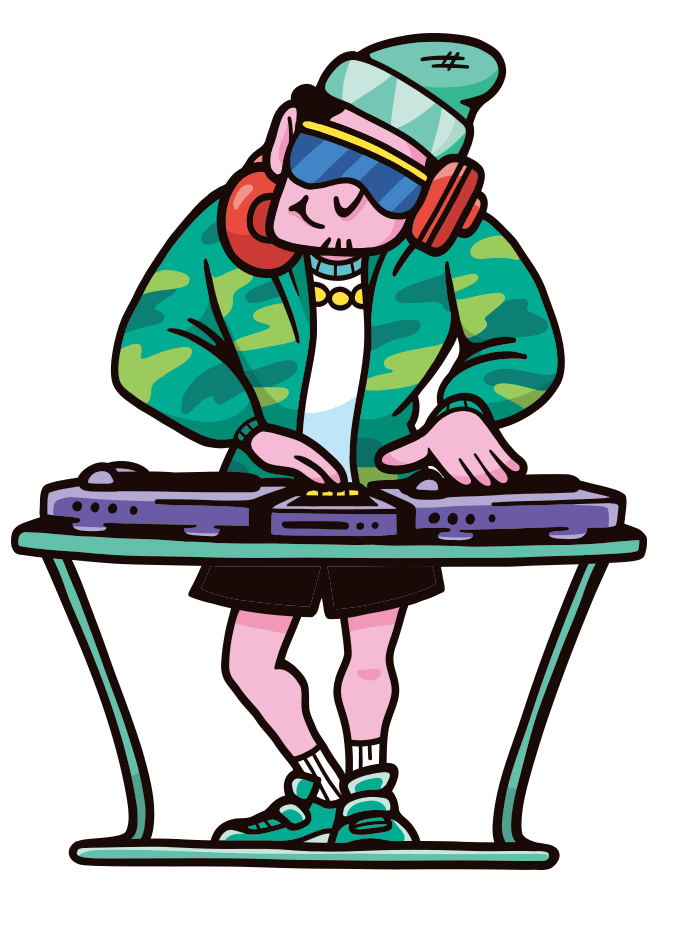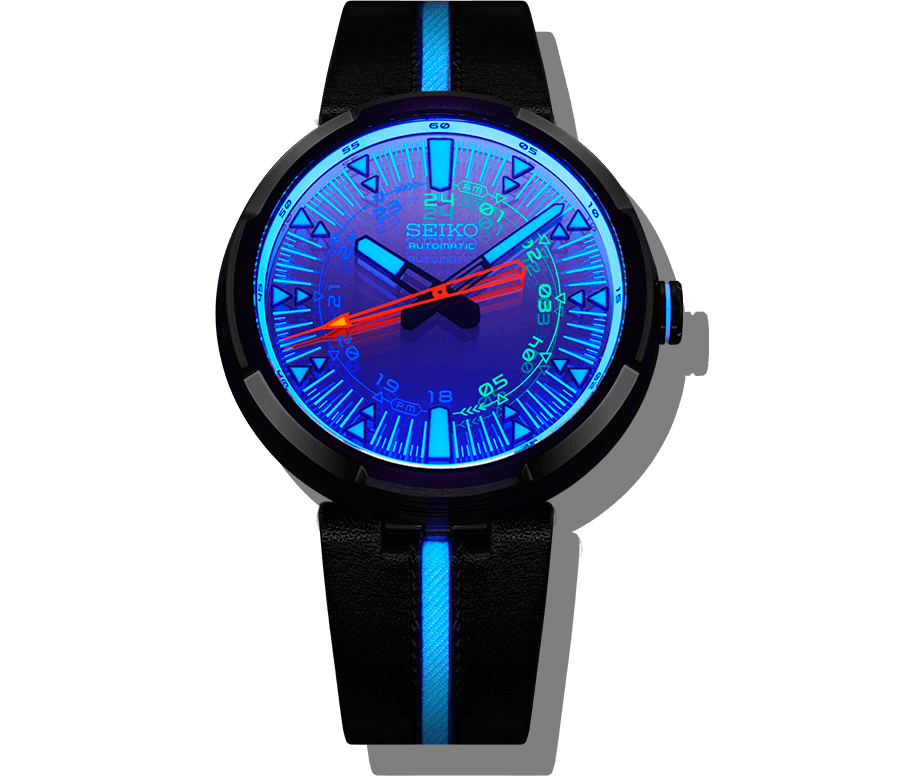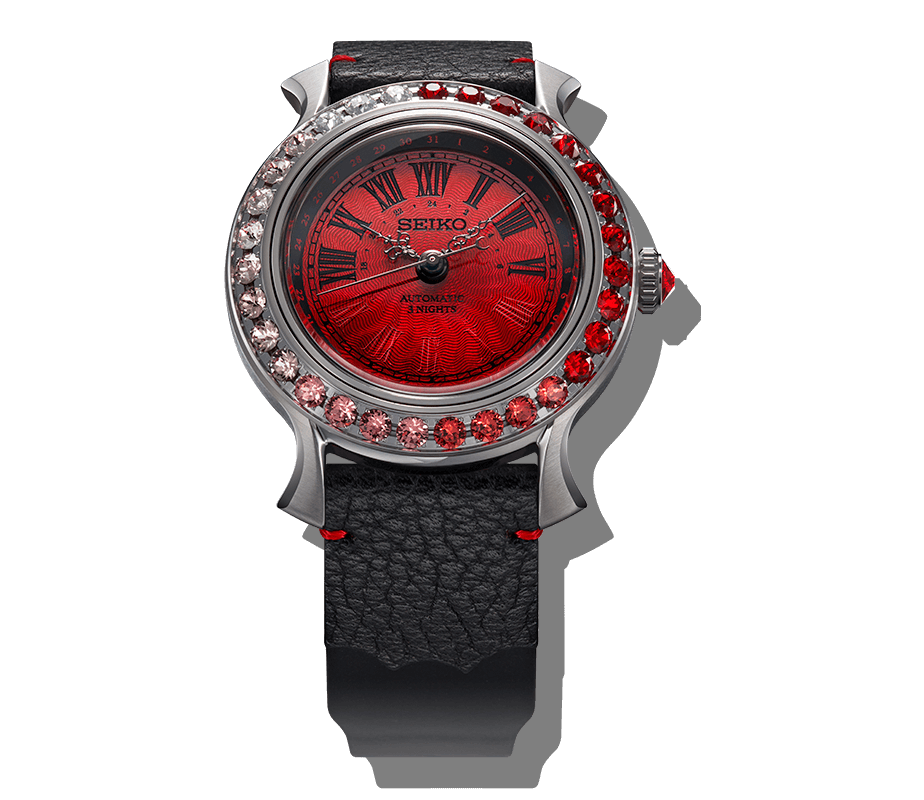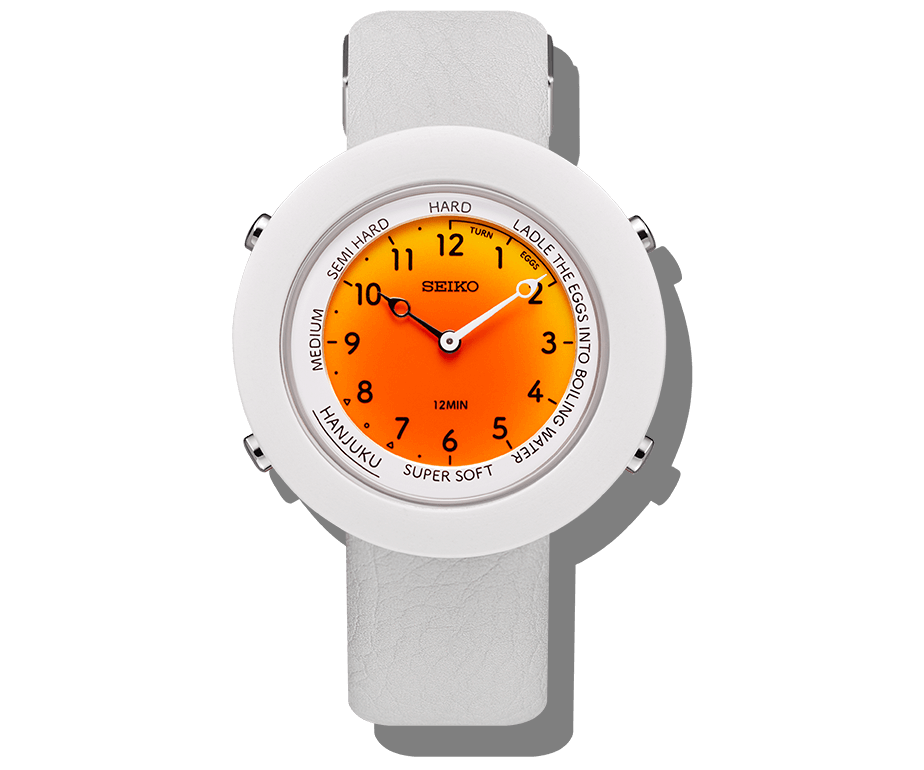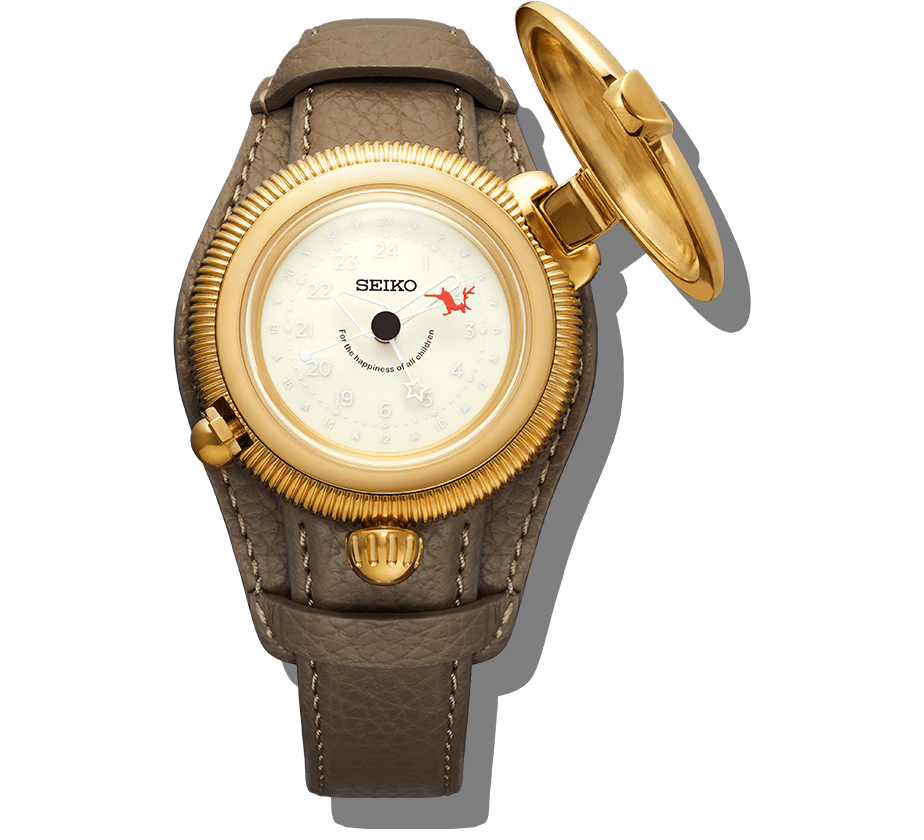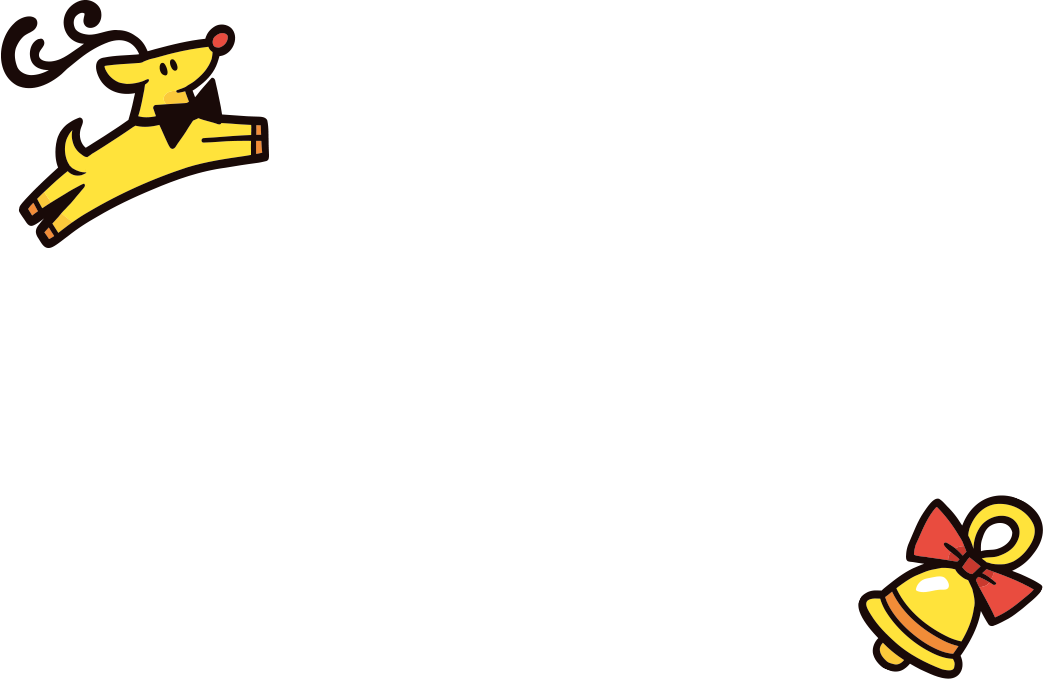Ninja Stealth Watch

Because they are so specialized, these watches are not practical for most people. This is the unfortunate fate of the “incredibly specialized watches” featured in this exhibition.
However, imagine if we associated these timepieces with a fictional character that anyone could easily picture—wouldn't that spark intrigue and captivate a wider audience?
This idea led to the creation of the Ninja Watch. I envisioned it as a cool timepiece that would appeal to international audiences, while strongly projecting Japanese iconography.
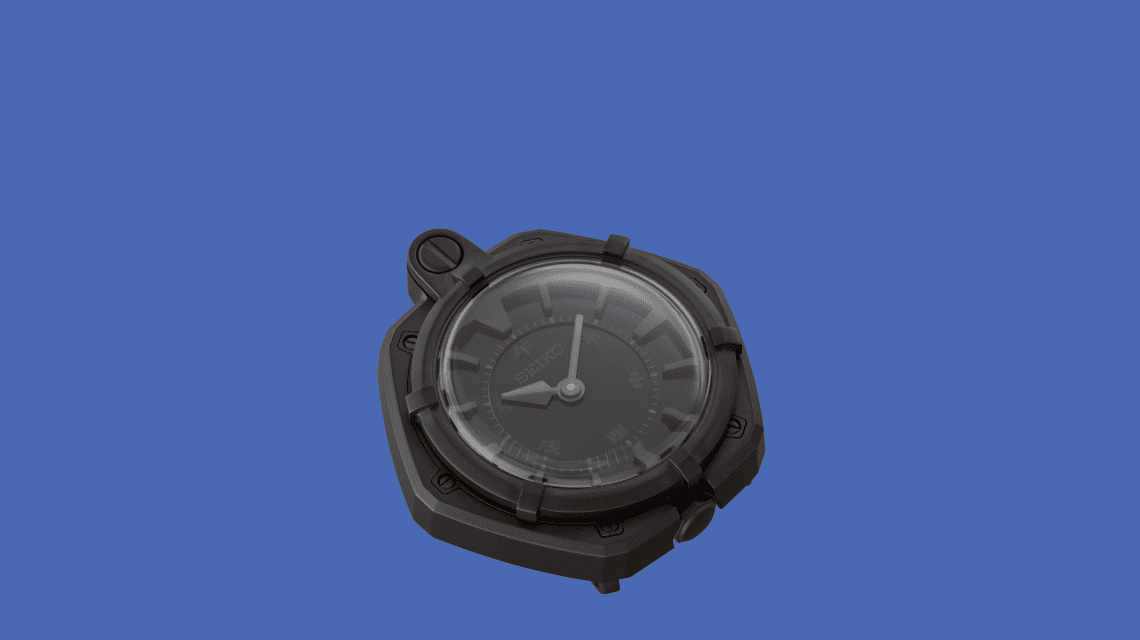
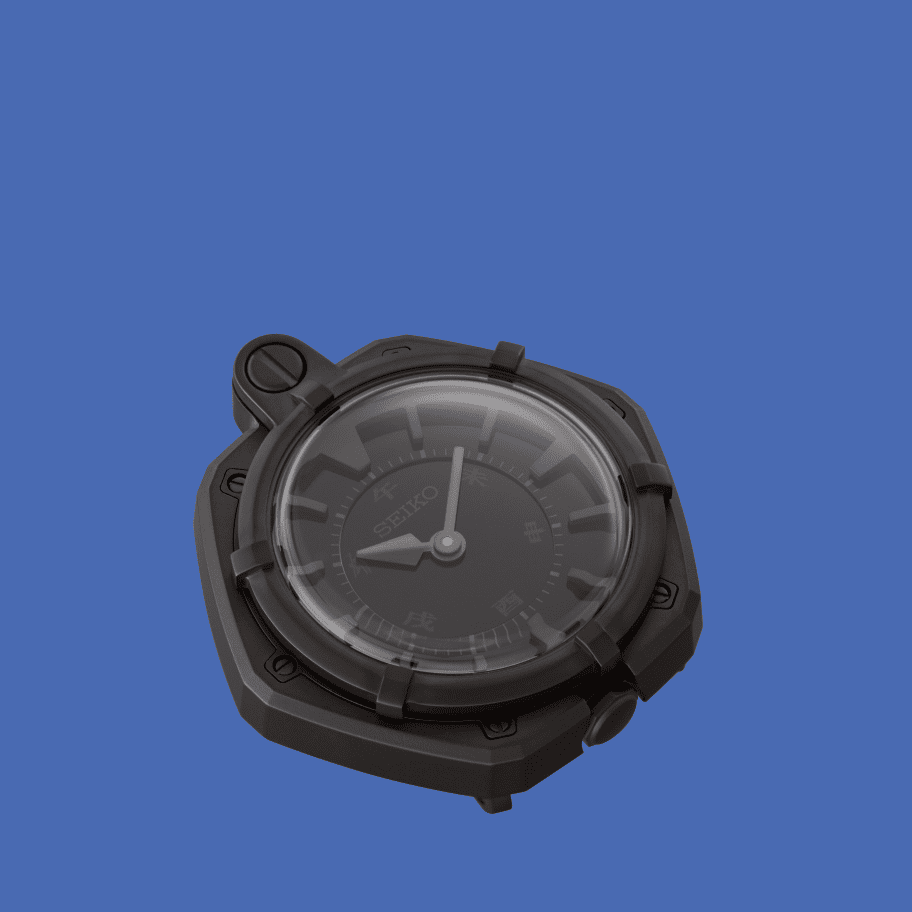 The cover opens and closes by sliding and the time is read by directly touching the hands and hour markers.
The cover opens and closes by sliding and the time is read by directly touching the hands and hour markers.
So, what are the essential functions of a watch for ninjas? I concentrated on the ability to tell time discreetly, particularly in complete darkness. The first solution that comes to mind is Lumibrite (luminous paint), but the risk is that the light could reveal your presence to an enemy. Additionally, you wouldn’t want to take your eyes off your target to check the dial. With this in mind, I developed the design concept of a tactile watch, allowing the wearer to read the time using only their sense of touch.
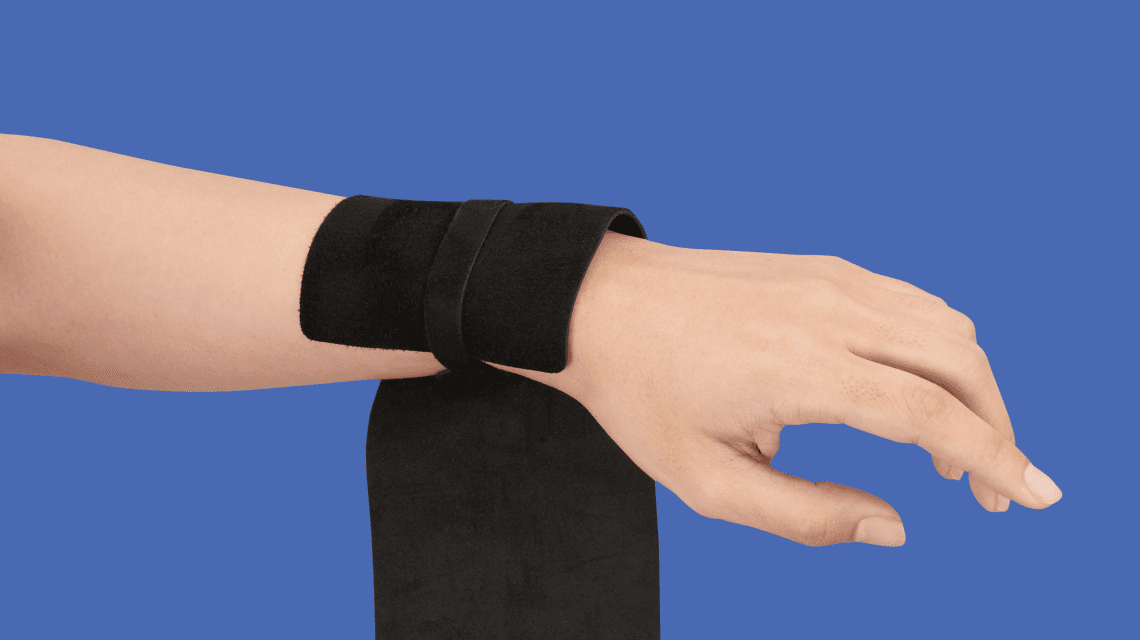
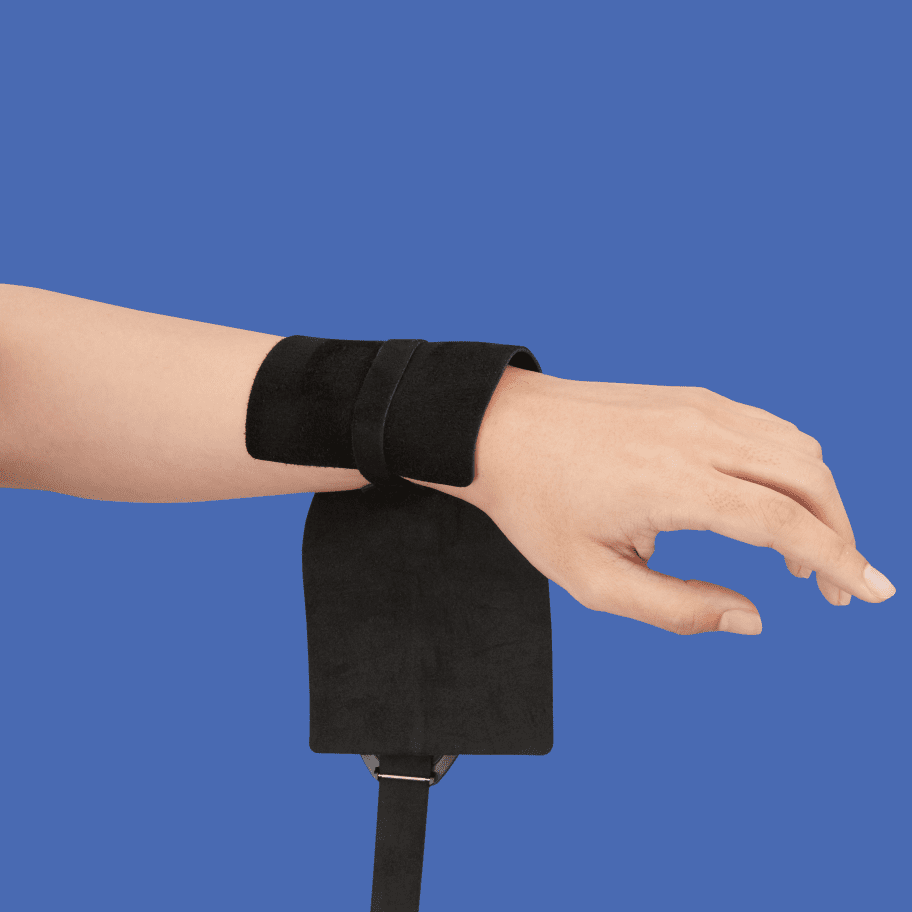 The strap, crafted from deer leather and inspired by the method of securing and loosening a Japanese archery glove, can be adjusted to fit arms of various thicknesses while also providing protection to the area where it is worn. As the watch is read by touch, it can be worn not only on the wrist but also on other areas of the body, such as the upper arm or ankle.
The strap, crafted from deer leather and inspired by the method of securing and loosening a Japanese archery glove, can be adjusted to fit arms of various thicknesses while also providing protection to the area where it is worn. As the watch is read by touch, it can be worn not only on the wrist but also on other areas of the body, such as the upper arm or ankle.Initially, the design was similar to a regular watch, as I thought that a watch that looked too ninja-like could expose their identity. However, I gradually shifted my thinking toward a watch that fully embraces the traits of various ninja tools. This evolution led to a rugged yet iconic design, centered around the keyword “tool-like.” The metal cover features the family crest of the lord to whom the ninja is loyal, and the watch includes playful touches, such as the unconventional use of a black color scheme that makes the entire watch hard to see.
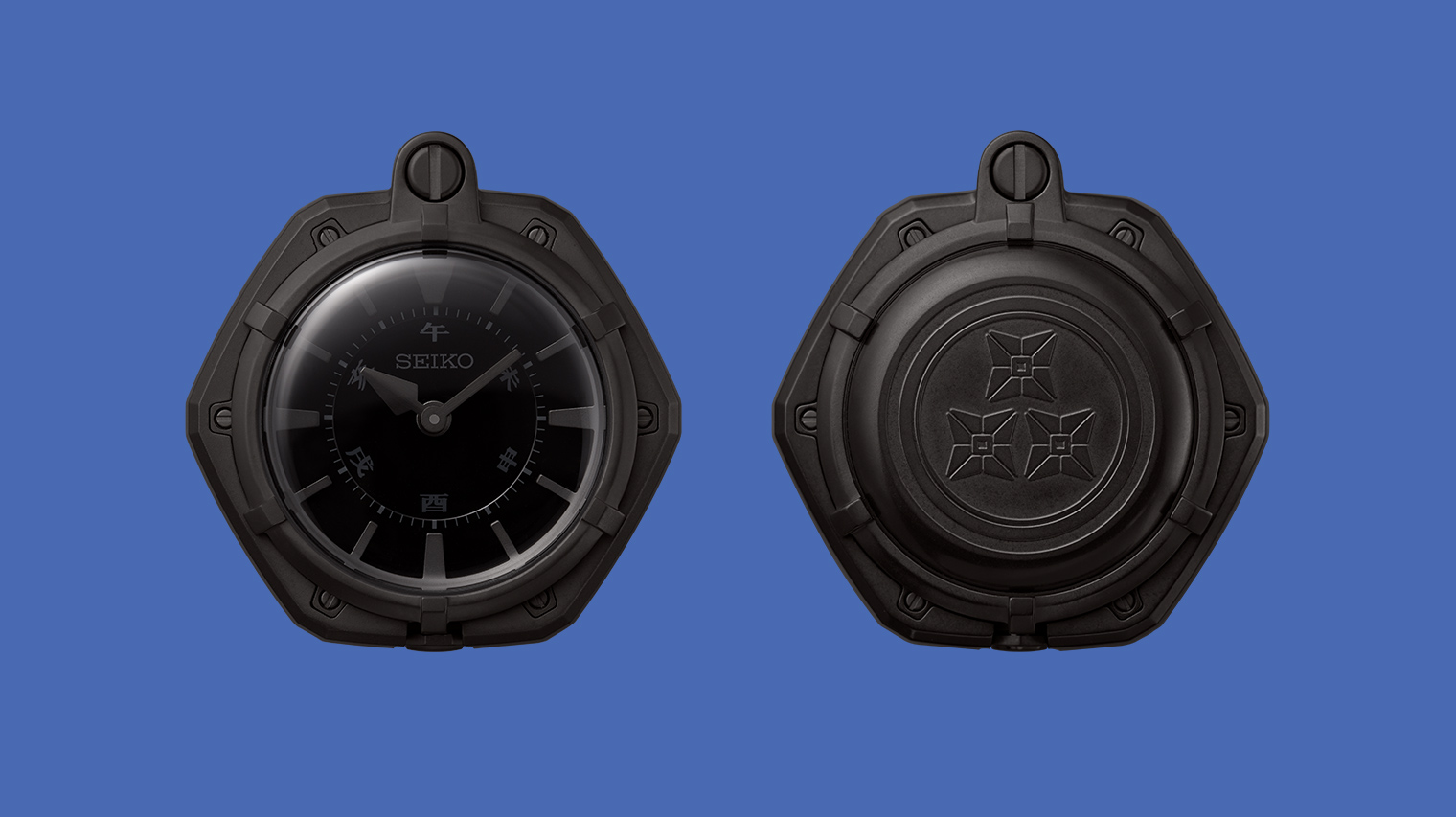 Two types of lids available: one with a glass lid (left) that allows you to check the time by sight, and a metal lid (right) that offers resistance to external shocks. The metal lid is decorated with an emblem representing the family crest of the house that the ninja serves. For this piece, the designer has incorporated his own family crest into the design, creating an original graphic that subtly incorporates ninja-like elements.
Two types of lids available: one with a glass lid (left) that allows you to check the time by sight, and a metal lid (right) that offers resistance to external shocks. The metal lid is decorated with an emblem representing the family crest of the house that the ninja serves. For this piece, the designer has incorporated his own family crest into the design, creating an original graphic that subtly incorporates ninja-like elements.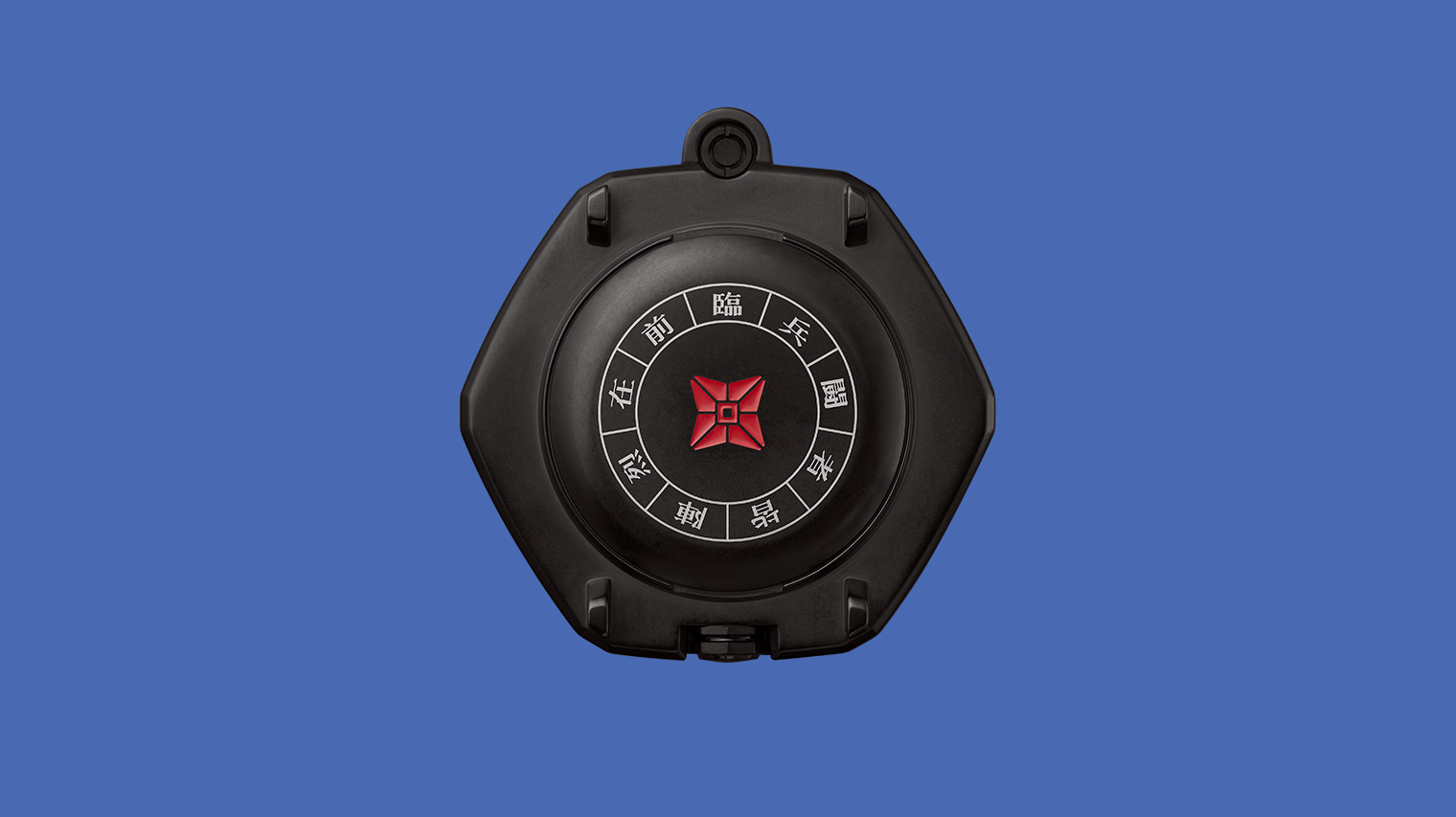
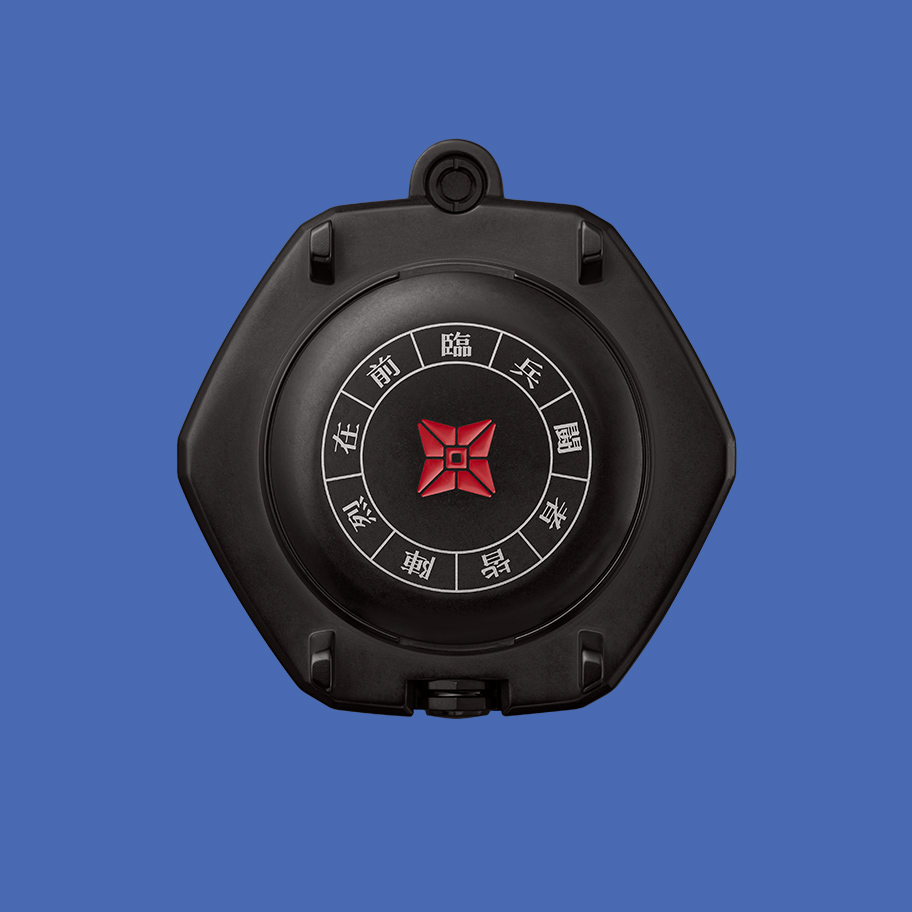 On the back of the case, there is a spell used by ninjas to focus their minds, accompanied by a graphic of a red shuriken. This single vivid element, concealed within an otherwise all-black color scheme, subtly symbolizes the ninja's intense fighting spirit.
On the back of the case, there is a spell used by ninjas to focus their minds, accompanied by a graphic of a red shuriken. This single vivid element, concealed within an otherwise all-black color scheme, subtly symbolizes the ninja's intense fighting spirit. Expert’s Comments
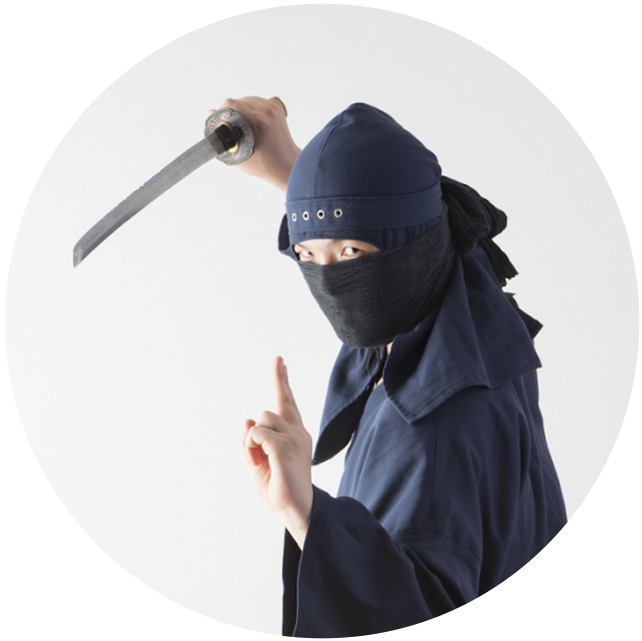 Nindōka, Practitioner
Nindōka, Practitioner of the Ninja Way Mr. Narashino Seiryukutsu
Wristwatches didn’t exist in the era when ninjas were active. So, how did they tell time?
Ancient ninjutsu texts contain teachings on timekeeping. According to Bansenshūkai, a 1676 compilation of writings on ninjutsu (the traditional art of ninja skills) from the historic regions of Iga and Koga, famous for producing some of the most skilled ninjas, ninjas measured time by such methods as observing the position of the Big Dipper, using tools like weights and hourglasses, and even judging whether their breath passed easily through their nose. For instance, they identified the time when their breath passed through the left nostril during Ne no Koku, Hour of the Rat (basically an hour segment corresponding to 11:00 p.m. to 1:00 a.m. in the traditional Japanese timekeeping system), alternating nostrils with each subsequent hour segment. Additionally, they used the changing shapes of a cat's eyes, which adapt to surrounding light, as a timekeeping reference. These shapes—resembling a circle, an egg, a Japanese persimmon seed, or a needle—were immortalized in the traditional counting song Neko no Me Uta (Cat's Eye Song).
In those days, measuring time was a challenging task. How much easier it would have been with such a remarkable watch as this! The way it’s worn immediately caught my attention—featuring a traditional design, it is secured with a string, much like a Japanese archery glove. What impressed me even more was the tactile method of telling time by feeling the hands with your fingertips. In our training, we often practice sensing objects while blindfolded to heighten our awareness as part of a tactile exercise. This watch would be ideal for that kind of exercise. If it ever becomes a reality, I’d certainly want one for my work!
 Designer
Designer
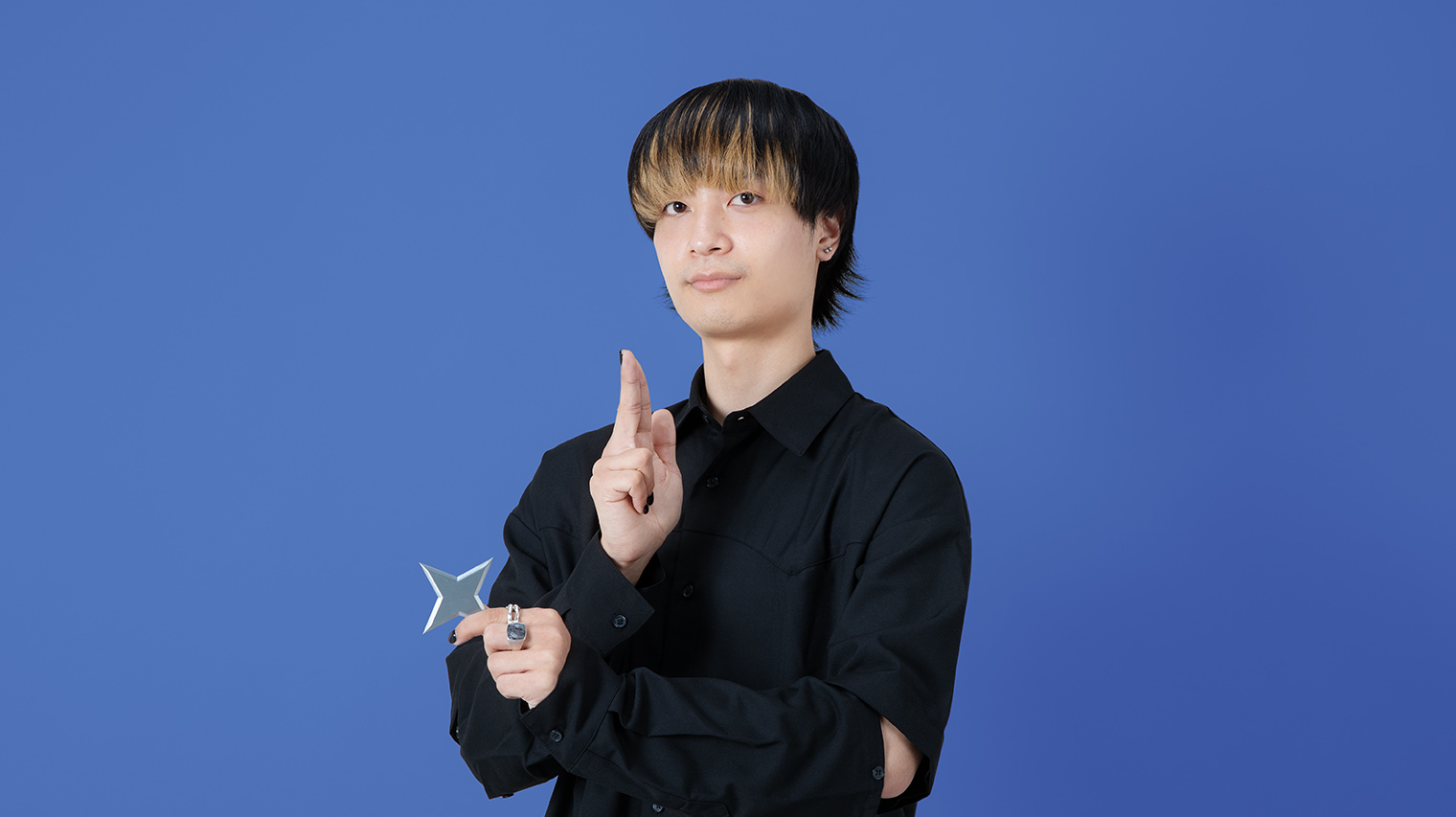
Yuya Suganuma
Suganuma joined Seiko in 2021 and is currently responsible for designing Seiko brand products, with a focus on Seiko 5 Sports.

